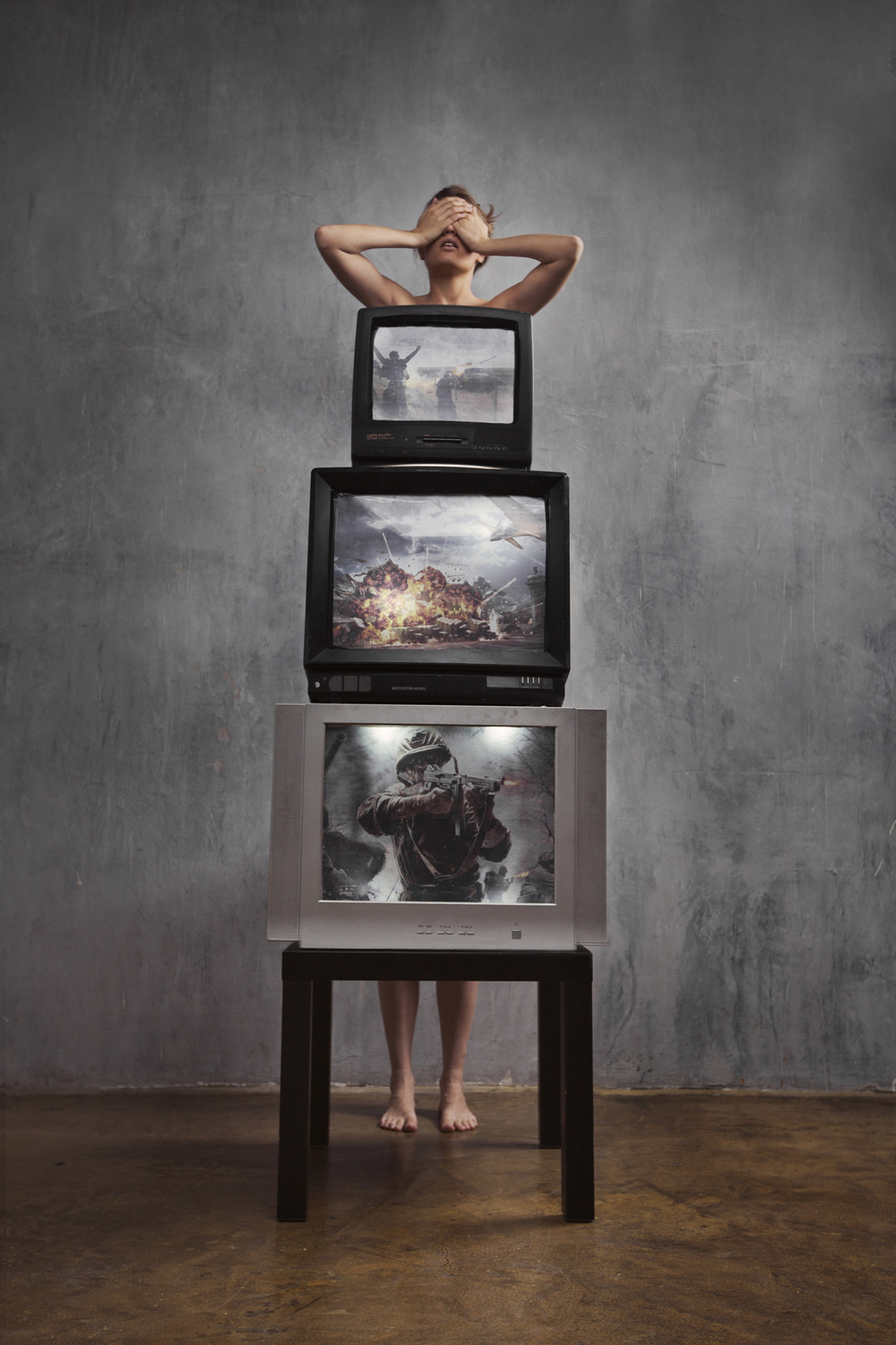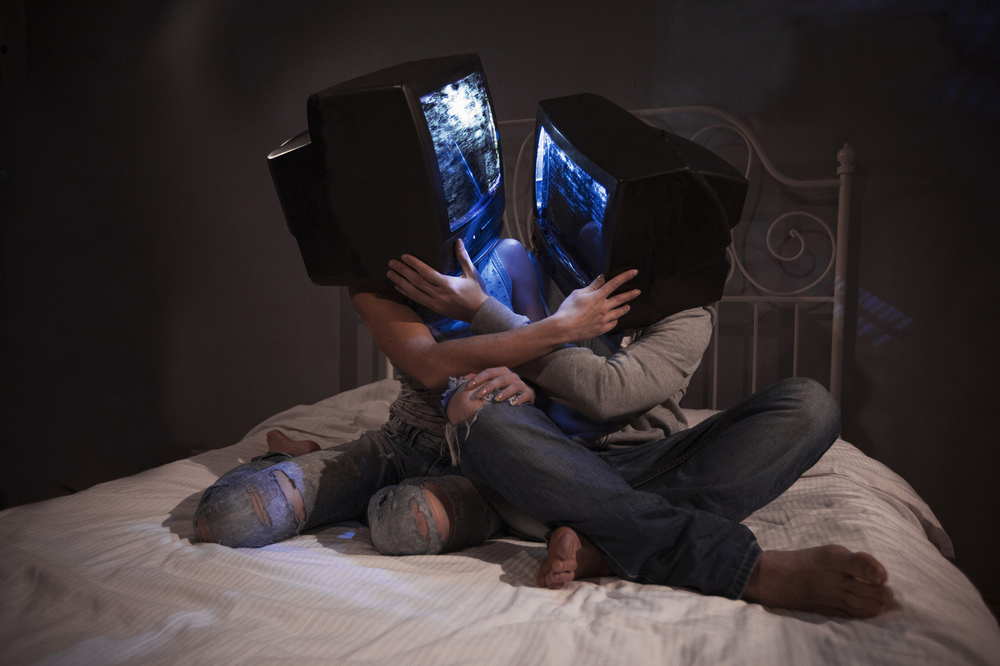INTERVIEW: Anna Radchenko talks about her Melancholy Rooms exhibition at Hoxton Gallery
Anna Radchenko is one of the new exciting talented breed of Russian artists that are now using London as their creative base. Originally from Moscow, Anna creates visual works on human emotions and observations of the modern world, working with installations and photography. We met with the artist at the opening of Melancholy Rooms, Anna’s first London exhibition, to talk about the show, her inspirations and future ideas.
Anna Prosvetova: Anna, how did the idea of this exhibition appear? Could you tell us about inspirations behind your work?
Anna Radchenko: It has all started in 2012 with a project called “Mother’s Love”, where I look into the reverse side of this “holy feeling”. I did not expect it to become that popular – it was almost in every Russian blog, hundreds of thousands shares in social networks and so on. After that wave of attention I forgot about the project for a while, but when it was time to decide on my Master’s project theme in London College of Fashion, and I decided not to focus on fashion photography, but to turn to contemporary art instead.
AP: You are a professional photographer. Why did you decide to present your first exhibition in the form of an installation?
AR: I was surprised, in a positive way, how much freedom we had during our MA Fashion Photography course. There was no obligation to do photography at all: some students decided to do videos, some did performances – such an amazing variety of creative practices. I have never in my life thought that I will do a large scale project like Melancholy Rooms. So I just said to myself: “When if not now?” And it worked. You are right, my original focus is photography, and this project has started with about 20 images for my MA. But from the very beginning I have been thinking of it as of an installation, and now I am bringing this plan to life for my first London show.

AP: In the 1990s Ilya Kabakov introduced his famous concept of the ‘total installation’, in which the visitor plays an important role, becoming a participant, an actor inside the installation. What is the relationship between the audience and the installation in Melancholy Rooms?
AR: It’s interesting that you have mentioned Ilya Kabakov, as he actually was one of my main inspirations for the exhibition space. I strongly believe that the concept of white walls with framed works on them is a little bit out of date. Or at least I am not the biggest fan of such display. My goal is to try and immerse the viewer into my world, to surround one with the very special atmosphere, let one feel oneself “inside” the work rather than at a distance.
AP: The show features amazing decorations and sculptures. Could you tell our readers more about the process of choosing the characters for the rooms and where the final objects were produced?
AR: Since the project has started, I shot more than 40 different concepts/characters. of course, for the exhibition I have chosen the ones I liked the most and the strongest ones. All the “sculptural” items (body parts) were produced in Moscow by a team called Zolotaya Staya, the rest has all been sourced, produced and put together in London by an amazing team of professionals leaded by Frederica Hodgkinson.
AP: Could you tell us more about your collaboration with Andrey Novikov, who created the soundtrack for the show? What role the music plays in the exhibition?
From the very beginning I knew that I wanted music to be an important part of my project. It is hard to think of anything more emotional, more touching than a music piece. It really helps to create the mood, and that is exactly what I was hoping to achieve – the maximum emotional engagement.
I have known Andrey for a while as a jazz musician when I started the project, but had never heard his electronic compositions. When I listened to some, I just knew that I want to try and collaborate with him on this. I think it was very successful, we understand each other very well, which is important, as sometimes two people say same things, but imagine completely opposite.

Andrey wrote a soundtrack for the current exhibition in the Hoxton Gallery, which consists of four pieces according to the number of rooms. We plan to add a track for every room in the future and release an album in a year or so.
I would like to quote Andrey here: “This was an unusual and a very personal project for me. It started initially from a conversation with Anna on different sounds and background noise that we could add to the exhibition for added impact (baby cries, social media notifications, etc); however as I started exploring those sound ideas further, musical themes started to emerge which eventually took on the life of their own and consumed all my evenings over the course of 2 months! I found that her photographs produced a strong internal response in me – sometimes not even the one that was, perhaps, intended. I found a lot of personal connection to the room themes from recording the melody of my late grandmother’s music box for Mother’s Love to using sounds of TV programmes from my childhood in Russia for Information War – and the soundtrack from being descriptive to the images became more of a standalone musical composition inspired and driven by the visual world of Anna’s photos. I hope that as such it would complement and deepen the exhibition themes and allow the viewer to immerse in the sensory and dark world of Melancholy Rooms”.
AP: You are a Russian artist working in London. Does your cultural background influence your work and how it could be seen in Melancholy Rooms show?
AR: It definitely does. I got a lot of inspiration from the recent events and mood in Russia for this project. It also influences my color preferences a lot I think, I normally do not use any bright colors at all, I just don’t feel comfortable with them.

AP: Your project talks about contemporary obsession with social media and television. How do you think people could overcome it and should they do it at all?
AR: I think the perfect way to manage the social media, television and any other technology usage is to have some days or time during the day when you do not use the technology and read a book, go for a walk or anything you enjoy doing, but with no iPhone in your pocket.
AP: Are you planning to extend the number of the Rooms in your project, looking at other critical issues of today? What are your future projects?
AR: That is exactly what I am planning to do. I hope to add a room or at least one exhibit at every country I will be bringing the exhibition to. The project has a great potential to grow. Andrey Novikov, the composer behind the Melancholy Rooms soundtrack, and I are also planning to release an album when around 10 rooms are ready. During the following year I will also be working on a book which will include my visuals and texts written by psychologists and philosophers on all the themes of Melancholy Rooms.
AP: Anna, thank you and good luck with the project!
All images are from Melancholy Room project, courtesy of Anna Radchenko.
Visit Anna’s official website for more details on her work. Please click here to learn more about Melancholy Room project.
This interview was originally published on Russian Art and Culture.